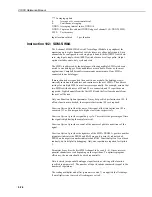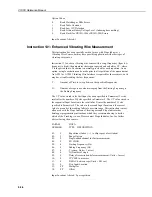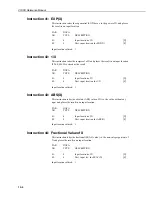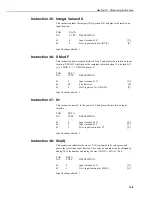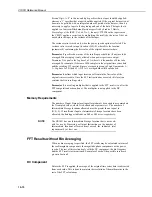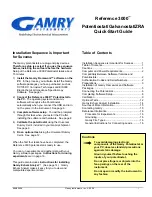
Section 9. Input/Output Instructions
9-35
Instruction 115: Set SDM Baud Rate
This instruction can be used to set the SDM communication rate. This may be
necessary when communicating over longer cable lengths. The default bit period
is 10 microseconds. Entering either 0 or 1 will give this default setting.
PARAM.
DATA
NUMBER
TYPE
DESCRIPTION
01:
4
Bit period, 10
µ
s units
Normally this parameter represents the bit period. If the parameter is indexed (--),
the value entered is an Input Location that contains the bit period to use.
The TDR Instruction 100 and the SDM-SIO4 Instruction 113 will
automatically adjust the SDM communication rate to the highest
possible rate that will operate correctly.
Instruction 117: Read Datalogger ID
This instruction stores the datalogger ID in an input location. The datalogger ID is
set in the *D Mode with Command 8 (see Section 1).
PARAM.
DATA
NUMBER
TYPE
DESCRIPTION
01:
4
Input location number
Instruction 118: SDM–CAN
Instruction 118 is used to configure and control Campbell Scientific’s SDM-CAN
interface. This interface is used to communicate directly with a CAN-bus
network. See the SDM-CAN manual for details.
Instruction 119: TDR100
Instruction 119 is used to configure and control Campbell Scientific’s TDR100
Time Domain Reflectometer. See the TDR100 manual for details.
Instruction 130: Error Monitor
This instruction stores an error count or status information from *B mode into an
input location. Indexing the option code will cause the instruction to store the
value into an input location and then clear the *B mode value. This is designed to
assist with troubleshooting and to alert users of possible problems.
PARAM
DATA
NUMBER
TYPE
DESCRIPTION
01:
2
Option Code (Index (--) to reset error count after reading)
02:
4
Input Location
NOTE






